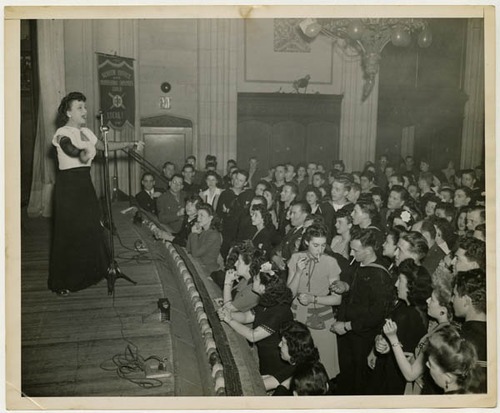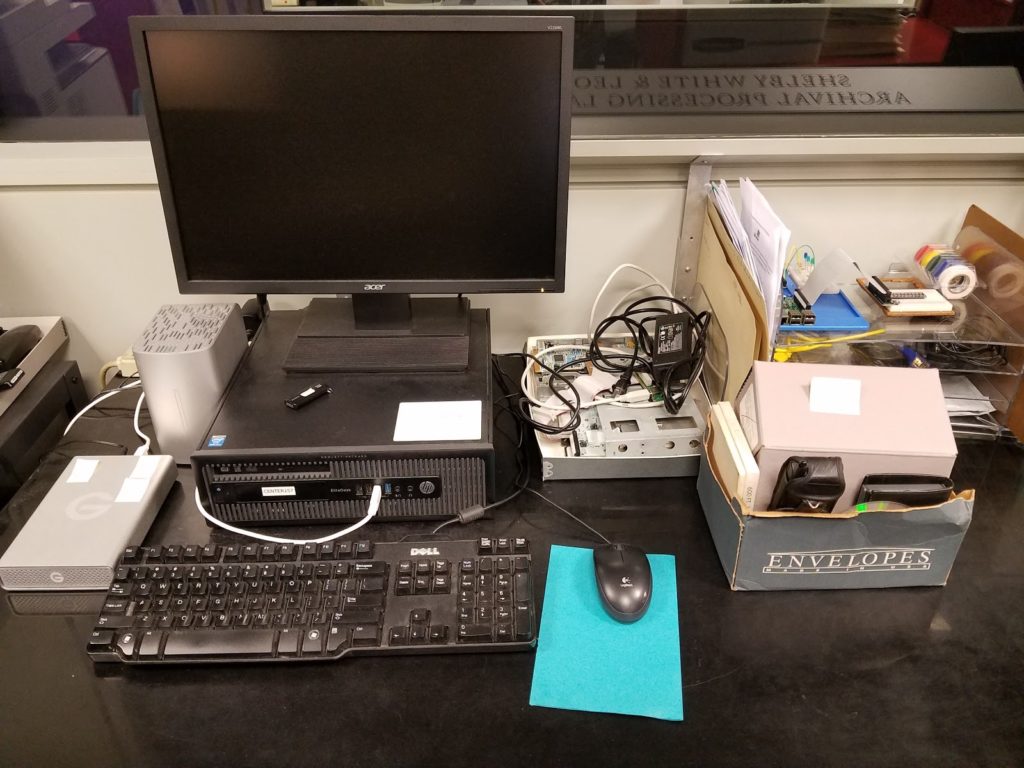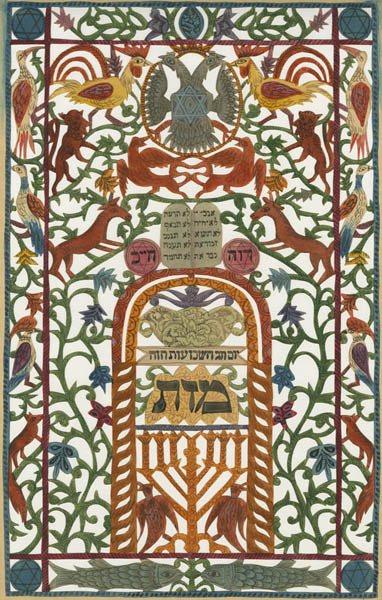We continue Sarah Ganton’s story of Molly Picon, for decades a household name in Yiddish theater and vaudeville, then a Broadway star and performer with the USO, then a radio personality. We’re very fortunate to have a rich record of her life through the archives of the American Jewish Historic Society, one of the five partners of the Center of Jewish History. Join us in celebrating this remarkable, vivacious and endlessly talented woman.

The early 1940s saw Molly facing two major shakeups. The first was the decline of the Yiddish theater she so loved. Molly recognized with chagrin the fact that fewer and fewer people could speak Yiddish, and the Yiddish theater would not see a new generation. She told a newspaper in 1935 that “Nobody is coming along to carry on the Yiddish theater here…. Now I give all my songs and sketches in English. That seems to be the only language our people understand.”[1]
Keeping herself ahead of the decline, Molly opened in her first Broadway play in 1940, titled Morning Star and written by Sylvia Regan. Molly still played a Jewish mother, familiar ground for her, but she left the gimmicks and the song and dance routines on Second Avenue and played the role with dignity. Her reviews were favorable, but the reviews of Morning Star itself were less kind.
It was not overtly panned, but reviewers spent more time likening it to traditional, downtown Yiddish plays than they did praising it. “In mood, in technique, and in treatment it is a traditional Yiddish play done in English, for it follows the East Side drama formula of alternating a sob and a laugh,” writes one reviewer. “We cannot recommend it to all theatregoers indiscriminately, but those who like plays depicting Jewish character and plays of a Yiddish theatre pattern may enjoy this production exceedingly.”[2] Molly’s “debut on the Broadway legitimate stage” was not a rousing success, but a success nonetheless.[3]
Having conquered Broadway, Molly returned to Second Avenue and her usual routine, continually attempting to keep the Yiddish theater movement alive. To that end, she and Jacob took one of Jacob’s Yiddish plays, Oy Is Dus A Leben, to Broadway, and in Yiddish no less. Based on Molly’s and Jacob’s own lives, it was Broadway’s first Yiddish play, a critical darling and a smash hit.[4] Oy Is Dus A Leben closed after over three months in January, 1943, a thoroughly respectable run for a Broadway play at that time.
By the time Molly had finished bringing Second Avenue to Broadway, World War II was going strong. Molly went on tour again, this time with the USO. She played in Hattiesburg, Mississippi, Camp Wheeler Georgia, Biloxi, Mississippi, Maryland, Norfolk, Virginia, Dayton, Ohio, and countless other bases and dance halls, bringing some Yiddish humor to America’s soldiers. During these tours, Molly and Yonkel began the practice of writing down the addresses of the young soldiers’ mothers, then writing to them to let them know their sons were all right, which they continued for many years.[5]
The work was rewarding, but more than anything Molly wanted the war over so she could return to Europe: “Every victory meant I was closer to getting back to Europe and performing for my beloved people–whatever was left of them.”[6] Victory would come, and Molly would cross the Atlantic once again, as we will see in the next installment.
Sarah Ganton is a former intern at the Center for Jewish History.
Previously in our series:
The Molly Picon Story, Part 2: A Star (and a Romance) Is Born
From Vaudeville to “Fiddler”: (Re)introducing Molly Picon, the “Jewish Charlie Chaplin”
[1] Molly Picon, qtd in Press Clipping, June 6, 1935; Molly Picon, papers; P-38; 54; 1083; American Jewish Historical Society, Boston, MA, and New York, NY.
[2] Press Clipping: “Pathos and Comedy Blend in Jewish Life Cavacade,” May 20, 1940; Molly Picon, papers; P-38; 65; Scrapbook for 1940-1942, page 4; American Jewish Historical Society, Boston, MA, and New York, NY.
[3] Press Clipping in Tribune, Salt Lake City, n.d. ca 1940; Molly Picon, papers; P-38; 65; Scrapbook for 1940-1942; American Jewish Historical Society, Boston, MA, and New York, NY.
[4] Picon, 93.
[5] Picon, 96-99.
[6] Picon, 100.



